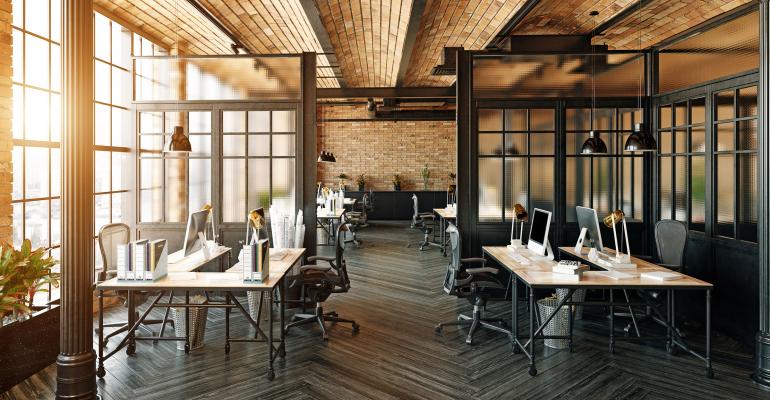Sponsored by SIOR - The Society of Industrial and Office Realtors
As tenant’s needs change and new generations enter and grow the workforce, the U.S. office market continues to evolve. In major and secondary markets, landlords have been investing in their buildings like never before, due to increased tenant demand for high-quality space. Tenants expect meeting rooms in a variety of sizes often containing amenities like snacks, beverages and craft beers. In addition, on-site gyms are not only expected, but need to have new equipment and to potentially even provide classes including yoga, barre, and sometimes even CrossFit. Lastly, building lobbies need to include high-end coffee offerings and multiple food options.
While providing such a multitude of building amenities, landlords are also offering large tenant improvement allowances. The allowances, which can range from $45 per SF to $100+ per SF, are required because tenants are designing their premises in innovative ways to appeal to the desires of the Millennial and Gen Z workforces. Tenant build-outs now include more common areas than ever before. In traditional office space, tenants used to have two to three seats per employee (offices, conference rooms, kitchens, etc.). That number is now in the four to five seat per employee range because of the increased amount of office common areas. In exchange for these larger tenant improvement allowances, tenants are providing landlords with longer lease terms. The typical five-year lease has given way to seven years, the typical seven-year lease is now 10 years, and the typical 10-year lease is between 12-15 years.
Landlords must also manage the ever-changing competitive landscape. In primary markets, landlords have been dealing with WeWork type companies for many years, but these groups are now entering secondary and even tertiary markets. Co-working companies have been able to provide small tenants access to Class A buildings without the landlords having to build out small (>2,500 SF) spaces.
Even with all of the aforementioned changes, the commercial real estate industry has continued to thrive in 2019. The office, industrial, investment and even retail markets have all remained strong. Brokers in each of these categories have been provided with multiple opportunities for success, whether they are representing landlords or tenants. However, there is a major unknown for 2020: the upcoming Presidential election. All indications are that this will be a contentious election which could result in a reduction in consumer confidence, creating a great deal of economic uncertainty.
One of the best ways to stay ahead of this potential volatility is to stay in regular contact with industry experts – brokers, economists and lenders - in markets throughout the U.S. In our industry, virtually nothing is more vital than connecting with other industry leaders. Membership in organizations like SIOR provide access and connections that are essential to success. If, for example, you’re a broker in secondary cities like Pittsburgh or Kansas City, you could learn what CRE trends will be coming to your markets by speaking with brokers in primary markets like New York, Chicago, Dallas or Los Angeles. By hearing first-hand what is new in primary markets, secondary market brokers can bring this information back to their clients – landlords and tenants – to have an edge on the competition and provide better service. This provides SIOR brokers a major differentiator when competing for assignments.
In terms of relaying all of this information, don’t assume that face-to-face contact has gone by the wayside. We live in world dependent on technology, but in-person meetings or events will always hold a great deal of value. There is no better way to connect with other industry leaders than to attend SIOR conferences on international, national, regional and local levels. SIOR’s Fall World Conference, October 17-19, 2019 in Portland, OR, is fast approaching. The conference gives brokers across the globe access up-to-date information that is not typically available to the general population. These conferences provide networking opportunities with fellow brokers, high-end quality speakers, and strong education options. As the economy evolves, so too should brokers. Clients are no longer looking for someone who can simply close a deal. The broker of today needs to be a savvy, client advisor, who stays ahead of the curve. Investing time in your career through networking and thought leadership with industry organizations like SIOR will pay off greatly in the services you provide to your clients, and growing your career in the long run.
Learn more about SIOR at go.sior.com/results.
Patrick J. Sentner, SIOR is an Executive Vice President with CBRE in Pittsburgh, PA. He is the 2019 SIOR Global Vice President.
The Society of Industrial and Office Realtors® (SIOR) is the leading society for industrial and office real estate professionals. With more than 3,200 members in 685 cities and 36 countries, SIOR represents today's most knowledgeable, experienced, and successful commercial real estate brokerage specialists. Learn more about SIOR online at sior.com.





